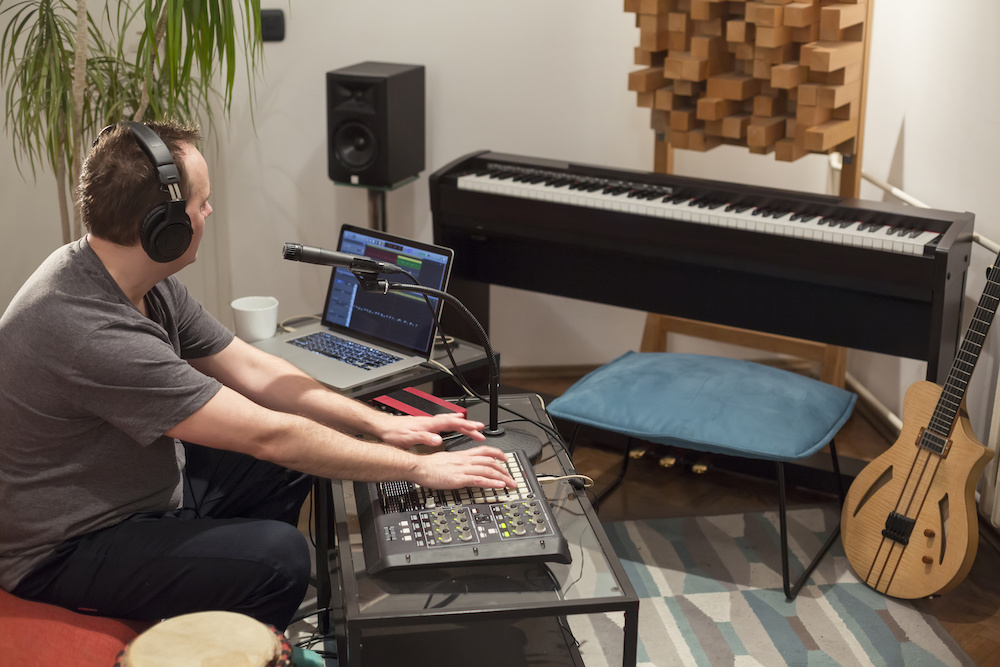How To Convert Audio to MIDI: Expert Tips for Beginners
We may earn a commission for purchases using our links. As an Amazon Associate, we earn from qualifying purchases.
Although it may seem a bit complicated at first glance, learning how to convert audio to MIDI files is incredibly easy.
With so many tools and DAW software available these days, you can turn different types of audio files into a MIDI format.
They can be anything from MP3 to AAC, AIFF, WMA—the list goes on.
At the end of this post, you should be able to quickly convert your audio files to MIDI using different techniques.
Why Bother Converting Your Audio to MIDI Files?
Before we dive deeper into how you can convert audio to MIDI, you must be wondering why you want to learn that.
The answer is simple; it makes your life easier!
Whether you’re just working in your home studio or a music production facility, it’s a skill that makes a big difference in the quality of your music.
With some audio-MIDI conversion knowledge, you can:
1. Edit like a pro.
One major benefit of learning how to convert audio to MIDI is it gives you greater control to edit your music.
For example, if you created some voice recording via the microphone, you can switch it into a MIDI file and edit to adjust the pitch, length, and tune.
You can also use it to polish vocal overdubs and make your output much better.
2. Add synth to your music.
Maybe you’re a great vocalist, a sax player, or a guitarist, but you don’t play the keyboard too well.
If you wish to incorporate this instrument without the need to find a good keyboardist to play a midi keyboard or master the instrument yourself, a quick audio-to-MIDI file conversion should do the trick.
You can simply make a recording using a familiar instrument and use the MIDI information to make it sound like real music from a keyboard.
Note that this isn’t just applicable to keyboards. You can synth MIDI information to create sounds from all sorts of instruments, too.
3. Switch bass levels.
Once you've converted your audio recording to a MIDI sequence, you can work on different bass sounds until you find the perfect one.
You can tune up an existing guitar line into a piece of super high-pitched music or a very low-frequency bass line.
You’d be able to do all of these in just a few mouse clicks.
Audio-to-MIDI conversions have many other creative applications, too.
Using a MIDI sequence of your audio recording, you can unite musical instruments by changing the pitch, velocity, cues, notation, tempo, and other properties.
How To Convert Audio to MIDI in Easy Steps
Now, let’s get to the fun part—converting audio to MIDI following steps that even beginners can do.
Step 1: Install a DAW.
Converting an audio file into a MIDI sequence is quick and simple, but you need a Digital Audio Workstation (DAW) to get started.
There are lots of different DAWs out there.
Essentially, this device or software is meant to help you create music, making the process so much easier, including MIDI conversions.
Among the most popular options are Ableton Live, Logic X Pro, and Image-Line FL Studio.
Note that some DAWs only work on Mac computers, so check the technical specs before purchasing one.
Lastly, look for a DAW that gives you comprehensive MIDI editing capabilities.
After all, the real work begins after you convert your audio to a MIDI file.

Step 2: Alternatively, use an online converter.
If you don’t have a DAW installed on your computer, or you simply want a fast alternative to converting your audio files, you can use an online converter instead.
Some websites offer free conversion.
They are specifically helpful when you are just converting simpler melody lines or when your audio recordings are starting to hijack the memory of your computer and slowing everything down.
Yes, MIDI formats keep music in a super compact size while keeping the quality on top!
However, since online converters lack editing capabilities, you will still need a DAW or a separate editor if your goal is to tweak or enhance your music.
Step 3: Familiarize yourself with your DAW’s conversion process.
The thing about DAWs is they are so easy to use. You need not spend several hours trying to figure out how they work.
All the features are already up there on your screen, including the conversion tools.
If you're using Ableton, for example, you start by selecting the clip from the Arrangement Views, Session, or the Live's browser.
Then, choose the appropriate conversion command for your clip. Your options are Drums, Melody, and Harmony.
Once you’ve done that, your MIDI track is ready to go.
If you’re using FL Studio, you simply need to import your audio file and click on the "Edit Sample."
A new window will pop up, where you will have to select "Tools" and then click "Convert to Score."
If you installed Logic Pro, you have to activate the Flex Pitch function. Once done, simply select “Create MIDI Track,” and that’s it.
Step 4: Understand that MIDI converters have limitations.
One thing you have to remember when converting audio to MIDI files is that tools and software programs are never fully accurate.
You might find that after converting your recording to MIDI, you're getting missing notes.
It's a common issue faced by home studio hobbyists and professional music producers.
Depending on the tool you're using, you may need to do some changing or chopping to get more accurate conversions.
For example, if you're using Ableton, you may need to add one or more transient to where the missing note is to ensure better conversions.
If you're recording your voice, you may try starting each note with a soft D sound.
That's because conversion algorithms often have trouble detecting sound if your pitch is not steady.
Also, you'll get more accurate conversions if your recording has fewer effects.
Things like delays, distortions, compression, echoes, or reverbs can affect the conversion outcome.
Converting Audio to MIDI
As you can see, converting an audio file into a MIDI format is quick and easy.
You just need two things: your audio recording and a tool converter.
Your converter can either be a standalone online tool or a complete digital audio workstation system.
Depending on your conversion goals, you should be able to find the best tool for your project.
With a MIDI file up on your computer, you’re one step closer to making great music!

